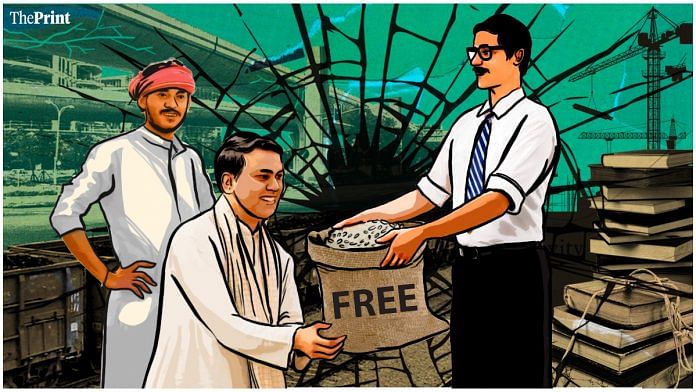The decision to discontinue the distribution of free foodgrain under a Covid-related programme has been cloaked in the cover of making grain free under the public distribution system (PDS). So far, the PDS has issued every kilogramme of rice at approximately Rs 3, wheat at approximately Rs 2, and coarse grain at a rupee.
The average subsidy on these was already about 90 per cent. Making it free therefore costs no more than an additional 10 per cent. Look through the cloak and what shows is a roughly 50 per cent reduction in the total amount of grain to be distributed either free or with a 90 per cent subsidy.
The net impact on Central finances will be a massive reduction in outgo. States that were offering free grain will also save money because the Centre is now paying the full bill.
In terms of fiscal discipline, one can’t quarrel with what has been done. Central subsidies on food, fertiliser and petroleum, taken together, are about 2.5 per cent of GDP — the same level as a decade ago. That’s partly because the petroleum subsidy (which used to account for a third of the total subsidy bill) has been largely done away with.
Next year’s food subsidy bill is likely to shrink in relation to GDP because of the latest decision. Whether the fertiliser subsidy too will come down depends on the course of the war in Ukraine. It is a fair guess that the total subsidy bill will shrink substantially.
The problem with the government’s decision lies not with the fiscal maths but with how it addresses two realities. One relates to the economics of farming, and the second to the income levels of much of India’s working population.
To deal first with agriculture: Most farmers get heavily subsidised fertiliser, free water, and free electricity. They also benefit from some of the lowest agricultural wages in the world. For some of the most important crops (not just foodgrain but also sugarcane), farmers also get a guaranteed buyer and price, thereby eliminating much of the risk inherent in farming.
The consequence is that there is little incentive for efficiency in using scarce or costly inputs. For many crops, productivity is below international levels. Wholesale subsidies do not build the viability of a sector that provides half the jobs in the country at very low wage levels.
Also read: There’s a fast-growing dragon in the sea. For Navy to keep up, India must tackle key hurdles
Turning to income levels, some 94 per cent of the 277 million informal sector workers who have registered on the government’s e-shram portal report monthly incomes of under Rs 10,000. Barely 1.5 per cent report wages above Rs 15,000.
For perspective, informal-sector workers are said to account for about 80 per cent of the total working population. Two-thirds of them are engaged in agriculture, where surveys report that income levels are only a quarter of non-agricultural incomes. In fact, inflation-adjusted farm wages have fallen in the past five years.
The wage levels are self-declared numbers, which may clash with the five-fold multiplication of per capita incomes over four decades. All of that additional income could not have gone to the highest echelons, as evidenced by falling poverty levels. There is also conflicting data on consumption habits and the purchases of consumer durables, which suggest a broadening middle-class category.
Even if the situation is as bad as reported, is free grain the answer? Most workers need no more than a day’s wages to buy a month’s supply of grain for the family at the current issue prices under the PDS. Making the grain free changes little. Indeed, it could set off a competitive populist cycle when sundry political parties are already offering free electricity, among other freebies. This would risk undermining more than just the rural economy.
Looking for options will take one’s search in the direction of broader economic policy.
Depressed agricultural wages will not narrow the gap with non-agricultural incomes until more manufacturing and service-sector work is created, so that fewer people depend on agriculture. Until then, some income support for the poor is unavoidable.
And third, a self-selecting programme like the employment guarantee scheme has more to say for itself, as does the argument for investing more in public health care, school education, and job-oriented training. Subsidies and freebies frequently divert attention from the real work to be done.
By special arrangement with Business Standard
Also read: End subsidies, handouts — what Budget 2023 must propose to bring deficit down to below 6%






